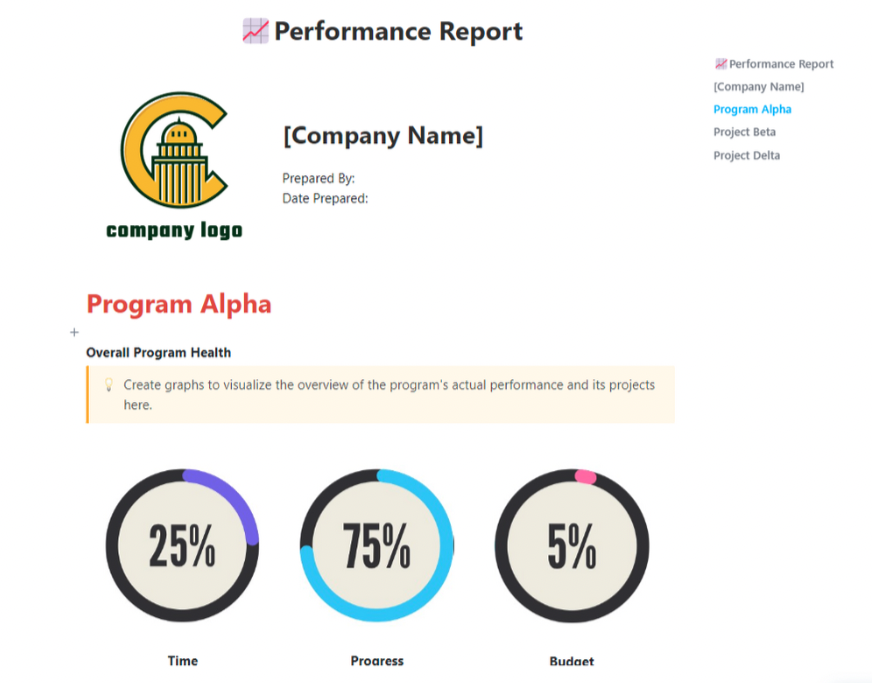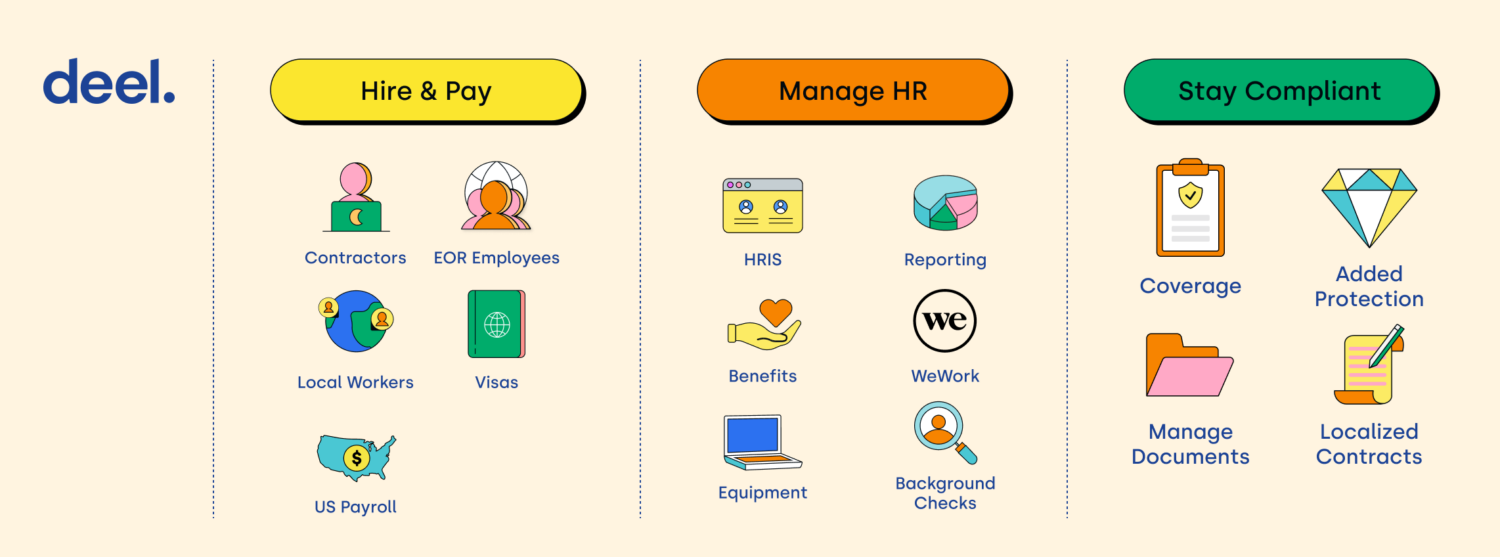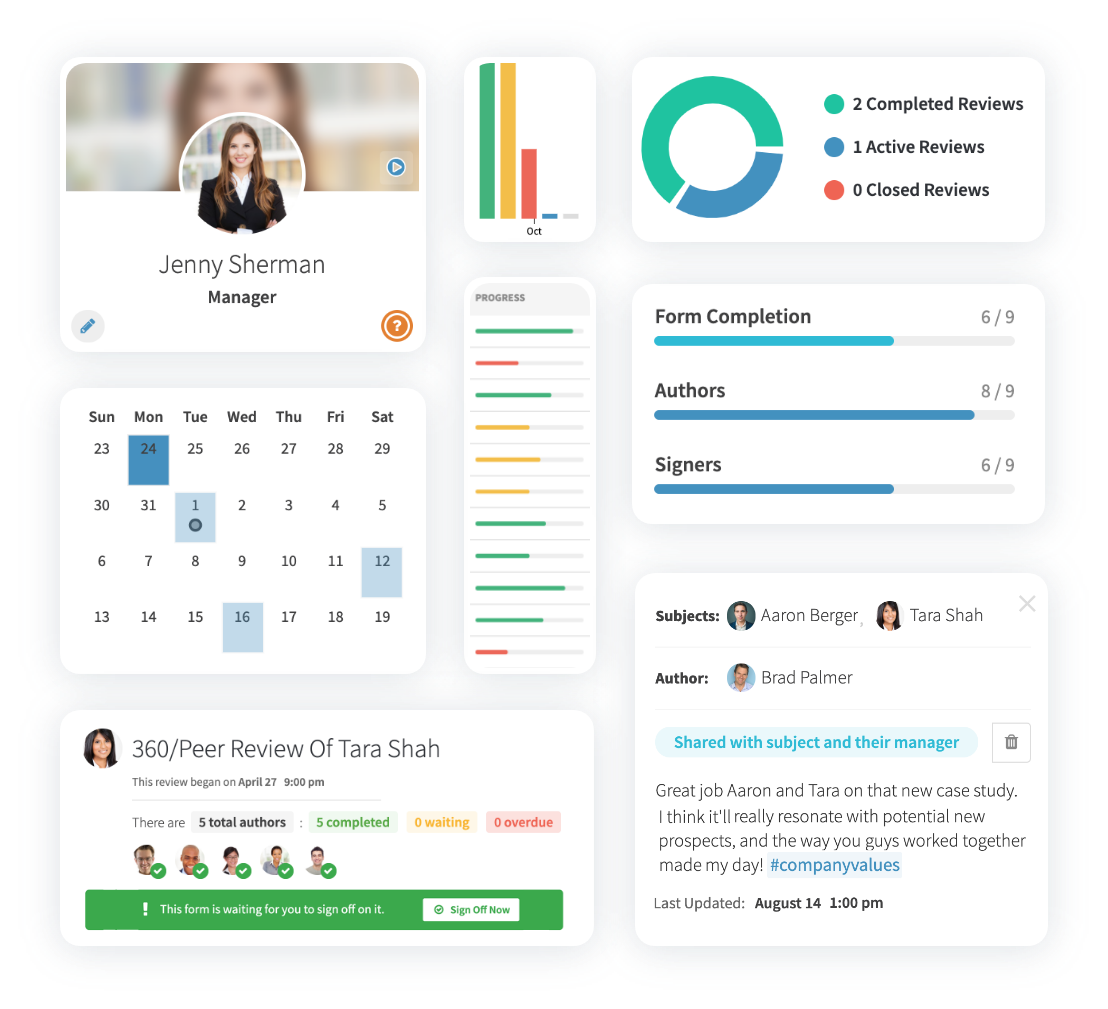In today’s fast-paced business world, monitoring and tracking employee performance is a critical component of any successful organization.
If you don’t know how your employees are performing, how can you possibly have any (profitable) expectations of your business?
It’s absolutely necessary to create a system for assessing and evaluating employee contributions and performance to ensure they align with the bigger organizational goals and expectations.

From setting clear performance goals, to regular check-ins, and incorporating 360-degree feedback, we’ll walk you through a series of actionable steps designed to lift the fog on the “how” part of “how to monitor employee performance effectively.”
Most organizations work pretty hard to maximize employee productivity to achieve their company goals. But, without a well-defined approach to tracking their actual employees’ performance, many are shooting airballs when it comes to hitting these targets.
Employee performance tracking helps identify your top performers, assess your employee engagement, and evaluate your employees’ time management skills.
Plus, it highlights areas for improvement regarding task management and workflows, while offering valuable insights into how to help employees work smarter, not harder.
According to Forbes, “managers spend 210 hours per year on performance management and employees spend 40 hours per year.” Share on XJust for fun, let’s do the math.
The average salary of a mid-level manager is $60,000 per year or $28.85 per hour (based on 52 40-hour work weeks).
210 hours at $28.85 is over $6000!
But wait! That’s $6000 per year for each manager who’s responsible for monitoring their employees’ performance! Does that sound like value-added time to you?
Check out these simple steps and management platforms so you can get on top of your employee management the right way. The smart way!
How To Track Employee Performance
Tracking employee performance is crucial for evaluating their contributions, providing feedback, and making informed decisions related to promotions, raises, and development. But how to track is where things can get a bit confusing. Here are five simple steps to track employee performance effectively:
Step 1: Establish Clear Performance Goals and Expectations
Clearly define the goals and expectations for each employee, aligning them with the organization’s core values. Employees should have a clear understanding of what is expected of them so they know what to aim for.
Step 2: Regular Performance Check-Ins
Schedule regular one-on-one check-ins with your employees to discuss their progress, achievements, challenges, and any adjustments needed in their goals or responsibilities. These check-ins can be booked as often as you want, but be sure to use these meetings to offer constructive feedback and guidance, as well as to listen to what your employees need from you.
Step 3: Use Performance Metrics and Key Performance Indicators (KPIs) as Targets
Establish relevant metrics and KPIs to quantitatively measure performance. These could be sales targets, customer satisfaction ratings, project completion rates, service calls, etc. Reviewing these metrics and discussing them (regularly) with your employees helps to assess their progress as it’s happening.
Step 4: Implement 360-Degree Feedback
Incorporate feedback from sources other than employees’ direct management. By including peers, subordinates, supervisors, and even customers, you can gain a bigger and more comprehensive view of your employee’s performance. This full-circle feedback can offer insights into areas that need some improvement and help in future goal-setting plans.
Step 5: Document and Track Employees’ Performance
Maintain a record of each employee’s performance and achievements, as well as any issues or challenges they face. Use a performance management system (or a simple Google doc if you’re old school) to record the performance data, feedback, and relevant accomplishments.
This information is necessary for any conversations relating to salary increases or promotions and helps in identifying trends and patterns – good or bad.

These 5 basic steps create a structured and transparent process for tracking your employees’ performance, but the side effects are just as valuable. They’ll also encourage better communication, promote personal and professional development, and improve overall employee performance within your organization.
Employee Performance & Monitoring Software Tools
Collecting the data is one thing. Tracking and monitoring all the moving pieces on the board can be downright tricky. Maybe it’s time to enlist the help of employee management software whose job is to handle all the stuff you really don’t have time for.
1 Deel
Best for: Human Resource Management – streamlining employee resources and information
In addition to their deep well of HR management tools, Deel Engage offers a variety of Slack plug-ins to help collect employee feedback, coordinate one-on-ones, and keep you all connected.
How this tool helps track employee performance: Although you can, sometimes you don’t have to monitor the actual employees to know how they’re performing. Deel Engage monitors all-things HR so you can identify nuances like, whether your employees are taking more “mental health days” than usual and how your retention numbers are holding up. These are byproducts of your company culture so measuring employee performance should certainly be part of the conversation.
“We use Deel as the go-to place to figure everything out. From hiring team members efficiently around the world to providing them with a portal where they can go for any question they have.” ~ Chloe Riesenberg – People Specialist at Project44
If you’re a Slack-heavy organization, the Deel Engage plug-in could be the culture boost you’ve been looking for. Request a demo to see if Deel fills the gaps in your employee performance monitoring process.
2 BambooHR
Best for: Customizing everything in the platform to meet your company’s specific needs
BambooHR offers both Manager reviews and self-assessments that can be compared to see if you and your employees are on the same page as far as their performance. Interesting concept – asking them to tell you how well they think they’re doing. What better way to meet your employees exactly where they are?
How this tool helps track employee performance: The Bosses love to see “the numbers” and BambooHR puts all your employee performance-related statistics right at your fingertips so you’re always ready with the real-time data.
“It gives us better visibility into where everyone is. If everyone is going in the same direction, we are so much more productive. If everyone is meeting their goals, that means our company is most likely meeting its goals.” ~ Jennifer Fisher – Director of People and Culture at ISTS
Did someone say “free trial?” Sure did! Sign up today and give BambooHR a $0 test drive!
3 ClearCompany
Best for: Managing all the moving parts involved in managing employees.
Imagine having a single place to automate, track, review, and report all-things employee performance-related. ClearCompany’s templates and best practices are the collaborative genius of some of the best performance management gurus in the business.
Together, they’ve created a platform that improves the employee experience for both the employee and the HR professionals managing all the employee performance reviews and records.
How this tool helps track employee performance: ClearCompany measures everything from recruiting to payroll, including performance management.
“ClearCompany is so easy. With the press of a button I can set up performance reviews four times a year. Every quarter my employees are going to get real feedback with numbers and then we can reward them easily based off of their performance review.” ~ Kasey Castle – Chief People Officer, Chick-fil-A Palm Beach Lakes and Chick-fil-A Okeechobee and Turnpike
ClearCompany doesn’t manage your employees – they help you manage the requirements of managing your employees. Check out a demo and see how much time you can get back each day by actually doing less.
4 PerformYard
Best for: Having a fully-stocked performance management toolbox at your fingertips
PerformYard doesn’t just improve your employees’ performance. This HR tool helps you create a high-performance culture!
Quarterly check-ins are great but PerformYard also offers reviews based on project completion as well, so employees don’t have to wait until next quarter to find out how they did.
There are also peer reviews, goal management tools, and customizable forms for performance reviews, so everything is literally in one place for your HR team. Of course, you’ll need to track and analyze all this data, but fortunately, that’s not a problem for PerformYard either.
How this tool helps track employee performance: A live dashboard offers a snapshot visual of all your employee performance data and then you can decide which elements you want to dig deeper into.
“We just renewed another contract with PerformYard and that speaks volumes. Typically everyone hates performance reviews and that’s terrible. We didn’t want our people to hate it. We wanted performance management and accountability to be built into the fabric of our culture. Performance management has become much easier because we have PerformYard in place.” ~ Kathy White – Director of Human Resources at Habitat for Humanity Philadelphia
Slide on over to their site and check out their two-minute product view video for more details then book a demo to see PerformanceYard in action.
5 ChartHop
Best for: Full access to all the “people data” related to your workforce.
With metrics on everything from diversity, gender equity, payroll, and ETO, you’d be hard-pressed to find a report that couldn’t be run in ChartHop. Their approach is tailored around the belief that performance impacts compensation, which impacts retention. Monitoring performance is the initial step to making the numbers work in your favor.
How this tool helps track employee performance: Measuring employee competencies using specific variables shines a spotlight on where training and education are needed and how you can empower your employees to refresh or advance their skills.
“Just being able to have ChartHop as a hub to do 1:1s, where managers and employees can capture information and progress throughout the month, the quarter, and the year is really huge. We’re seeing huge gains and wins here in productive communication and feedback.” ~ Chris Hall – People Ops Architect at Fund That Flip
Take a look at this quick video to see all the people data ChartHop could be managing for your company.
Ways To Track Employee Performance + Ideas & Tips For Managers
All the automation and electronic tracking software in the world can’t compensate for the basic human connection. Human Resource professionals and company leadership still need to be connected to their employees to ensure a healthy cycle of communication remains open and flowing.
1) Review and Renew Their Strengths
Offering opportunities for employees to brush up on their skills (and even learn new ones) can give them a renewed interest in their role and revive their motivation to succeed. This is a prime time to start tracking employee performance because it provides a solid baseline to improve from. Plus, eternal learning and new opportunities keep employees engaged and make them feel valued and appreciated for their specific contributions.
Tip: Technology and information are constantly advancing, so keeping up with these advances ensures your employees stay relevant and on top of their game.
2) Set SMART Goals
Setting realistic goals for your employees keeps them working towards clear objectives and allows everyone to measure their progress along the way. SMART Goals are a great idea because they’re:
- Specific – well-defined with clear intentions and objectives
- Measurable – directly tied to measurable metrics
- Attainable – tough enough to be challenging but not unreachable
- Relevant – in alignment with the organization’s company values and bigger-picture goals
- Timely – complete with deadlines or some form of time-based measurement
Tip: Allow your employees to set their own SMART Goals so they can challenge themselves while allowing you to measure their performance based on their own efforts and achievements.

3) KPIs (Key Performance Indicators)
By establishing KPIs, you give your employees a crystal clear picture of what they’re working towards. Showing them which metrics and contributing factors affect the bigger picture – and how – gives them more control over their personal progress. KPIs at multiple levels should feed into one another, creating a constant flow of effort toward meeting the company’s bigger goals.
Tip: It shouldn’t be tough to connect your employees’ SMART Goals to your company’s KPIs since they have some of the same qualities – measurable, attainable, relevant, etc. Get your progress flowing!
4) Formula for Collecting Feedback
Having a strong feedback formula can be a game-changer for your employee performance measurement. What better way to gauge the actual temperature of your workforce than getting it directly from the source? Of course, once you gather the feedback via pulse surveys, you’ll need to create an action plan to prioritize and address the feedback and show your employees how much their input matters.
Tip: Employee surveys are always a great way to collect a bulk of information from everyone on your payroll. But you could also create a private platform for employees to share their thoughts and concerns anonymously instead of having to wait for the quarterly survey.

5) Review Your Process
You’ve given them a voice and the power to drive the company’s success. But your employees want to know how they’re doing too! You could always use one of the super versatile tracking tools in this article to monitor progress over time leading up to quarterly one-on-ones. The goal of any manager should be to stay on top of the progress without micromanaging so that employees feel supported without feeling overly scrutinized.
Tip: Allocating time to review their progress in ongoing projects, their goals, career aspirations, and struggles is an opportunity to address your employees beyond the numbers they generate.
People Also Ask These Questions About Tracking Employee Performance
Q: How do companies track employee performance?
- A: Companies track employee performance by setting clear goals, monitoring their employees’ progress, and using performance-tracking software to tie it all together.
Q: What are the benefits of tracking employee performance?
- A: The benefits of tracking employee performance are knowing exactly how well your employees are performing (or not), and understanding where your gaps may be that are keeping your employees from blowing the roof off their goals.
Q: How do managers measure employee performance?
- A: Managers can measure employee performance by monitoring each employee’s individual goals, how they’re contributing to the company’s KPIs, and of course, any fluctuations in sales and revenue directly related to their roles and responsibilities.
Q: What are the challenges of tracking the performance of your employees?
- A: Some challenges in tracking the performance of your employees may be caused by the misconception that they’re being “monitored.” Your employees may feel they’re being micromanaged or that you don’t trust them, so you have to ensure they understand you’re not keeping tabs on them – you’re calculating the bigger picture.











